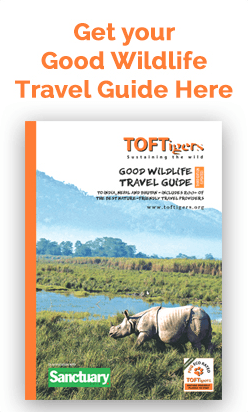Our Measures of Success

Since our launch in 2004 tiger numbers up from 1411 in 2006 to 3,167 according to the latest 2022 Government census (6.7% higher than the estimate as per census in 2018). With the completion of 50 years of in 2023, India has made some major achievements in its successful conservation journey. From 28 tiger reserves in 2004 to 53 tiger reserves, India now hosts 70 percent of the world’s tiger population. The tiger population doubled between 2010 and 2018, four years ahead of the internationally accepted target of 2022. We have seen a significant increase in tiger numbers in reserves frequented by tourists. Infact there is a correlation between visitors and tiger population. It is also a direct indicator of the health of the forest too. An approach based on diverse, employment-intensive tourism is needed as a conservation tool, particularly outside core areas. Directing tourism revenue towards upliftment of communities is the way for tourism to thrive. Hence, Sustainable tourism and community inclusion is a great tool for conservation, read how it has been done , in an article written by Member Administration, Capacity Building Commission, Government of India. Read more here

Many well visited park now overflowing with tigers – and the authorities are having to relocate tigers to new parks, to those whose populations have declined or not recovered. The stark contrast between the parks and sanctuaries that have the benefits of a nature based economy, and those that have failed to stimulate or achieve this new green economy is stark and worrying in most instances. Now the key to their long term sustainability is better governance and better planning across a greater number of protected and non protected areas. See our views in this blog

Today a new passionate army of nature lovers has been created through the new access to their natural heritage. From just a few thousand at the start of the new millenium to over 6 million visitors today and growing at 20% per annum. Protected areas are created not only to save essential biodiversity, but also to allow all its citizens to enjoy, commune, recreate and learn within nature – and this is of incredible importance for our own mental and physical health and wellbeing – as much as it is for the survival of humanity. Get more information on visitor numbers from our research studies here.

The advent of nature tourism in South Asia, has created massive new rural economics besides park boundaries, driving new jobs, livelihoods and enterprise opportunities that has driven down rural poverty and catalysed more village community support, better health and education improvements than any other industry could. Marginal village communities, once victims of wildlife conflict, have become wildlife’s greatest advocates, changing their lives and behaviour towards their parks, all with the advent of this nature focused economy. Our research highlights communities being up to seven times better off with nature based tourism, than villages without. View our important research on the economic value of nature tourism to communities here

Today visitor park fees in a number of well visited parks now generating more revenues for conservation and local communities than entire budgets provided by both state and federal Governments for their ongoing protection. A number are so successful that they are able to support other wilderness areas nearby too. This is a remarkable turn around in just the last 15 years or so, benefiting parks, the village communities and also Governments, who now see wilderness as valuable, both as biodivesity and as economic zones. Read more here











